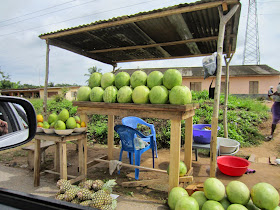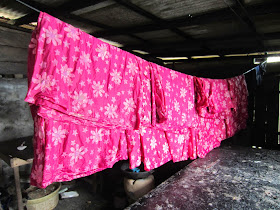We took a short trip to South Dakota in October because--well--just because. South Dakota was one of the unchecked states on my husband's Fifty States List. Honestly, I wasn't all that excited to go to South Dakota. The whole state has only 850,000 people, 3,000,000 fewer people than Los Angeles.
Besides, unlike my husband, I had been to South Dakota before. My family had driven through in 1975 and visited the three sites covered by this post. This time, Bob and I flew to Rapid City and rented a car. Our first stop was just 15 minutes from the airport.
1. REPTILE GARDENS
Unfortunately, we arrived in South Dakota a couple of days after the earliest snowfall in the state's history. Sadly, the "Gardens" part of Reptile Gardens had been drastically affected. There was substantial frost damage:
But other parts of the garden still looked pretty good:
Besides, unlike my husband, I had been to South Dakota before. My family had driven through in 1975 and visited the three sites covered by this post. This time, Bob and I flew to Rapid City and rented a car. Our first stop was just 15 minutes from the airport.
1. REPTILE GARDENS
Unfortunately, we arrived in South Dakota a couple of days after the earliest snowfall in the state's history. Sadly, the "Gardens" part of Reptile Gardens had been drastically affected. There was substantial frost damage:
But other parts of the garden still looked pretty good:






















.JPG)


.JPG)
.JPG)

.JPG)
.JPG)
.JPG)





.JPG)













.JPG)



.JPG)
.JPG)
.JPG)